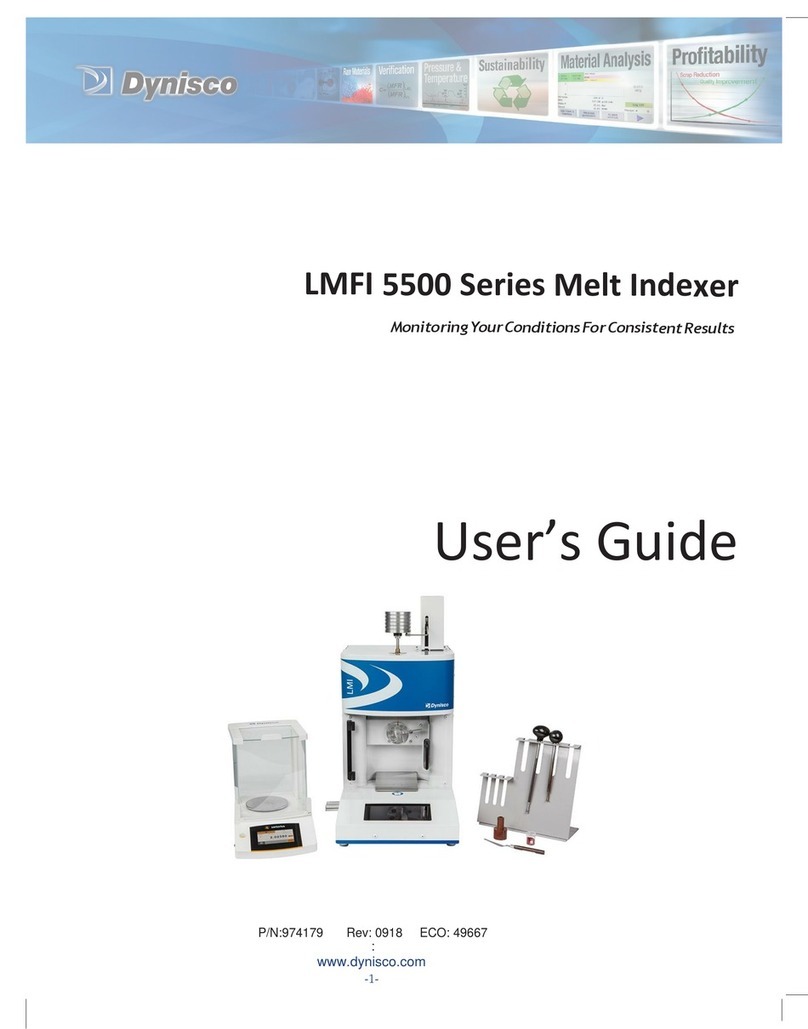
DYNISCO SC170 Manual
11
11
1
11
11
1
1.0 INTRODUCTION
The SC170 is a programmable, two-wire, isolated signal conditioner
that accommodates DC milliamperes, DC millivolts, DC volts,
Potentiometer (slidewire), two and three wire resistance as inputs.
This instrument is exceptionally versatile and can be used when any
one or all of the following requirements exist:
• Signal isolation
• Conversion of signal types (e.g., Millivolt input to 4 to 20mA
output)
• User-tailored noise filter to eliminate noise without damping
• Local digital display in engineering units
• Bar graph display indicating percent of span
• Local configuration without external calibration sources
• NIST traceable calibration warranted for 24 months.
The SC170 achieves its performance through the use of digital signal
processing and microcontroller technologies. Many of the features,
such as the automatic self diagnostics and the exceptional temperature
stability, are transparent to the user.
It is simple to setup and operate the SC170 signal conditioner. It can
be set up, with a smart local display, the LD-2, and a two-key
keyboard, the KB-2. These accessories facilitate local configuration
and ranging of the signal conditioner. In operation, the local LCD
display indicates the measured signal and units of measurement to six
digit resolution, an analog percent of range indication and also
provides a seven-character alphanumeric label or message indication.
The SC170 signal conditioner does not have any potentiometers or
switches to set, and there are no user-serviceable components inside
the enclosure. It has a two-year NIST traceable calibration warranty.
Opening the enclosure will void the manufacturer’s warranty.
This manual is divided into several main sections. Section One,
INTRODUCTION, describes briefly the signal conditioner and the
organization of this manual. Section Two, UNPACKING AND
INSTALLATION, contains much useful information for the first time
installer. Section Three, SIGNAL CONDITIONER OPERATION,
contains analog mode of operation. Section Four, CONFIGURATION,
THE DISPLAY MODE, explains display mode. Section Five,
APPLICATIONS INFORMATION, contains additional applications
information. Section Six, SPECIFICATIONS, deals with the signal
conditioner specification.





























